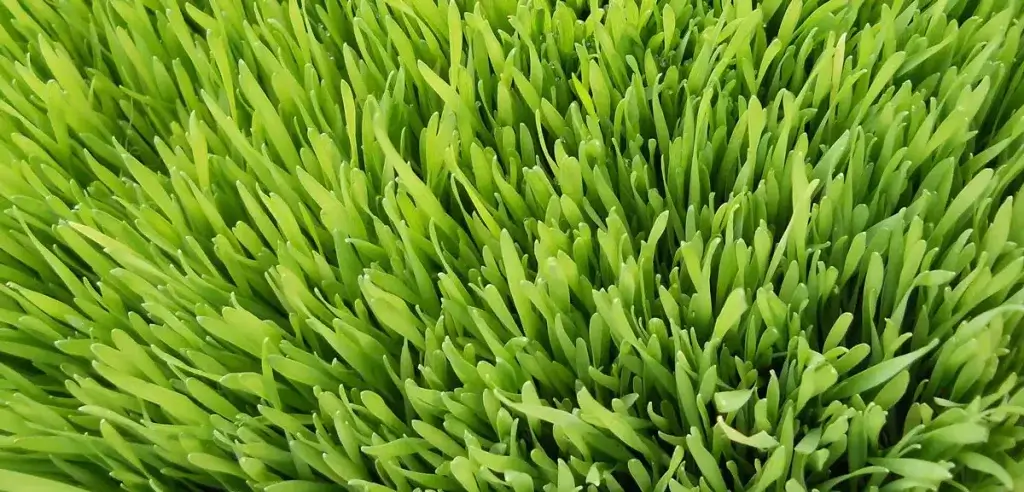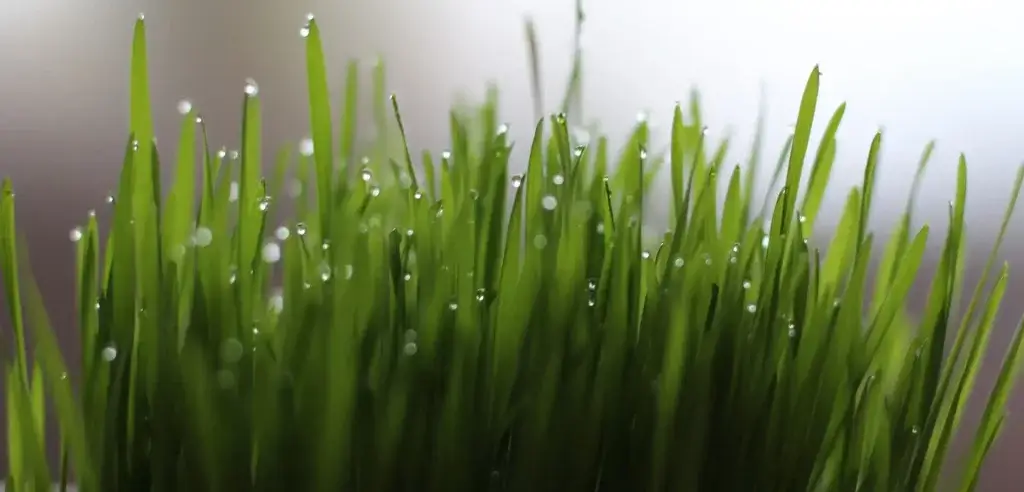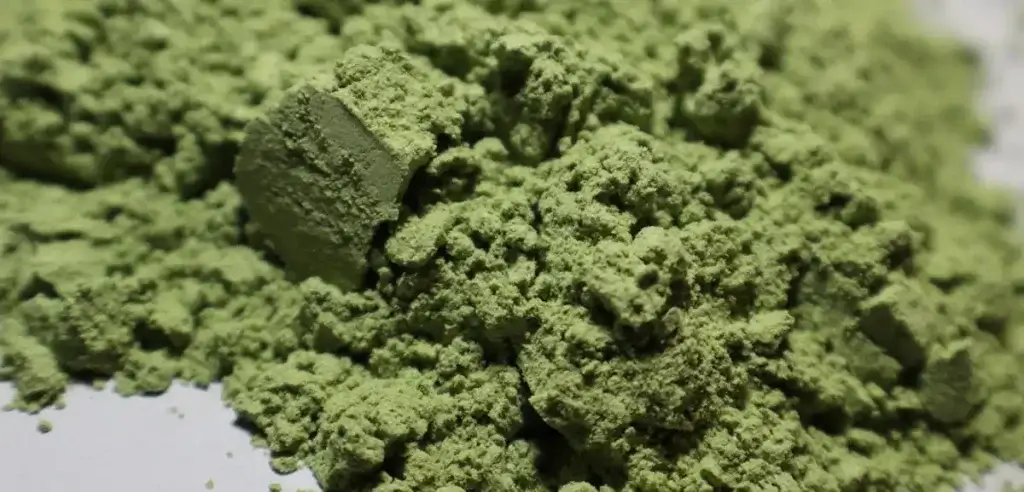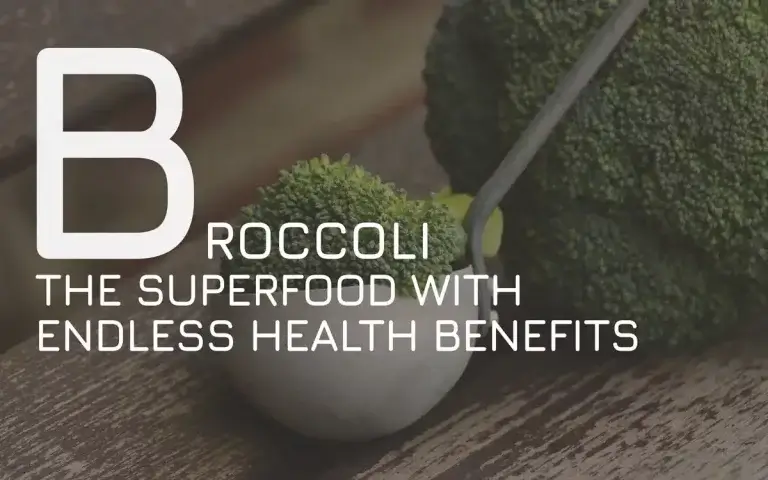Discover 19 Amazing Health Benefits of Wheatgrass
The health benefits of wheatgrass are many. It is a powerful superfood, high in antioxidants, vitamins, minerals, and enzymes, making it an excellent source of nutrition. Wheatgrass can help boost your immune system, improve digestion, and detoxify your body. It is also anti-inflammatory and can help reduce the risk of cancer and other diseases. If you are looking for a healthy and nutritious way to improve your health, wheatgrass may be just what you need!
What is wheat grass?
Wheatgrass is a type of grass that is commonly found in wheat fields. The young grasses are juiced to create a “wheatgrass drink” or milled down into a fine powder to be used as a food supplement for both humans and animals. Wheatgrass has a grassy taste with a hint of sweetness.

It is rich in nutrients, including chlorophyll, vitamins, minerals, amino acids, and enzymes. When consumed, wheatgrass can help to detoxify the body, boost energy levels, improve digestion, and reduce inflammation. It is also believed to have anti-cancer properties. Wheatgrass can be consumed fresh, juiced, or dried. It can also be added to smoothies or blended into green juices.
Wheatgrass nutritional value
Wheatgrass is a food product that is sometimes lauded for its nutritional value. It contains vitamins, minerals, antioxidants, and other nutrients that can be beneficial to our health. Additionally, wheatgrass contains enzymes and phytonutrients that are essential for human health. However, there are some aspects of wheatgrass consumption that pregnant women should be aware of.
Wheatgrass grows in soils and water and is often consumed raw. As a result, it may contain bacteria that could cause severe harm to a young infant. For this reason, women who are pregnant or who are caring for an infant should avoid consuming wheatgrass. Additionally, wheatgrass contains gluten, which can be problematic for individuals with celiac disease or non-celiac gluten sensitivity. Consequently, it is important to consult with a physician before adding wheatgrass to one’s diet.
100 grams of wheatgrass contain the following nutrients:
- 429 calories
- 57 grams carbohydrates
- 0 grams fat
- 28 grams protein
- 28.6 grams fiber
- 2.8 milligrams vitamin E (19% of RDI)
- 0.30 micrograms Vitamin B12 (13% of RDI)
- 122 IU Vitamin Α (8% of RDI)
- 0.66 milligrams iron (8% of RDI for men, 4% of RDI for women)
- 21 milligrams phosphorus (3% of RDI)
- 8 milligrams magnesium (3% of RDI)
- 42 milligrams potassium (2% of RDI)
- 8.3 micrograms Vitamin B9 – folate (2% of RDI)
- 1 milligrams Vitamin C (1% of RDI)
- 7.2 milligrams calcium (1% of RDI)
What are the health benefits of wheatgrass?
Wheatgrass is a potent source of nutrients that offer a wide range of health benefits. For instance, wheatgrass is rich in chlorophyll, which has been shown to promote a healthy metabolism and encourage an alkaline environment in the body.
Wheatgrass is also a natural antibacterial, meaning it can help to halt the growth of unfriendly bacteria in the body. Additionally, wheatgrass has been shown to purify the liver and rebuild and strengthen the blood. Other potential health benefits of wheatgrass include restoring fertility, reducing sore throat pain, fighting skin conditions, and helping to regulate blood sugar levels. Ultimately, wheatgrass is a nutrient-rich superfood that offers numerous health benefits.
1. Helps oxygenate the body
Wheatgrass is a powerful detoxifier, helping to remove impurities from the blood and promoting a healthy environment in the body. The high chlorophyll content of wheatgrass helps to encourage the production of oxygen in the bloodstream, which in turn helps to purify the blood and remove toxins. Wheatgrass is also rich in vitamins, minerals, and other nutrients that help to support overall health.
2. High in chlorophyll
Wheatgrass when juiced, it is said to supply a high dose of chlorophyll. Chlorophyll is a type of pigment that helps plants to convert sunlight into energy. It is also known for its ability to detoxify the body and boost the immune system. It is believed that wheatgrass can help to cleanse the blood, improve circulation, and reduce inflammation. There is some scientific evidence to support these claims, but more research is needed.
3. Helps alkaline the body
Wheatgrass is a great way to alkalize the body and boost nutrient absorption. When the body is too acidic, it becomes a breeding ground for disease. Wheatgrass can help to reverse this trend and create an environment in which health can thrive. It is also a great way to increase the absorption of important nutrients like electrolytes, vitamin C, and vitamin E. This can be crucial for overall health, especially as we age.
Research indicates that wheatgrass may help to prevent acidosis, or an overly acidic state, in the body. Acidosis is linked with various health conditions and degenerative diseases, making it a serious issue. Wheatgrass is able to prevent acidosis due to its high chlorophyll content. Chlorophyll has been shown to balance the body’s pH levels and protect cells from damage. Consuming chlorophyll-rich foods like wheatgrass is associated with anti-aging effects, such as younger-looking skin and better weight management. In addition, wheatgrass consumption may also lead to a boost in skin health due to its chlorophyll content.
4. Boosts metabolism
Wheatgrass is rich in chlorophyll, a compound that has been shown to increase the rate at which the body burns calories. Additionally, wheatgrass contains compounds that can help to detoxify the liver, an important organ for maintaining a healthy metabolism. While more research is needed to confirm these effects, wheatgrass may be a helpful addition to a healthy diet for those looking to boost their metabolism.
5. Rebuilds blood
Wheatgrass is a rich source of vitamins, minerals, antioxidants, and enzymes. Wheatgrass is particularly high in chlorophyll, which gives it its deep green color. Chlorophyll is known for its ability to cleanse and detoxify the blood, making it an excellent supplement for those looking to improve their health.
Wheatgrass is also a good source of iron, which is essential for building healthy red blood cells. For this reason, wheatgrass supplements are often recommended for people with anemia or other blood disorders. In addition to rebuilding and strengthening blood, wheatgrass is also thought to promote immunity, aid digestion, and reduce inflammation.
6. Acts as an antibacterial
In recent years, wheatgrass has gained popularity as a natural antibacterial agent. Studies have shown that wheatgrass can halt the growth of unfriendly bacteria, making it an effective treatment for infections and inflammation. Additionally, wheatgrass is rich in vitamins, minerals, and amino acids, making it an excellent source of nutrition.
7. Restores fertility and balances hormones
Wheatgrass helps restore fertility and balance hormones. Wheatgrass supplement helps to increase antioxidant levels and improve circulation. This, in turn, helps to improve reproductive function and increase the chances of conception. Wheatgrass is also a rich source of chlorophyll, which helps to detoxify the body and reduce inflammation. This can help to normalize hormone levels and reduce the symptoms of conditions like PMS. For best results, wheatgrass should be taken as part of a healthy diet and lifestyle.
8. Detoxifies the body of heavy metals
Heavy metals are dangerous toxins that can build up in the body over time, leading to serious health problems. Thankfully, wheatgrass is a powerful detoxifier that can help to remove heavy metals from the body. Wheatgrass is rich in chlorophyll, which has been shown to bind to heavy metals and help remove them from the body. In addition, wheatgrass is a natural diuretic, helping to flush toxins out of the body through urine. Furthermore, wheatgrass contains vitamins and minerals that help to boost the immune system, making it better able to fight off infection and disease. For these reasons, wheatgrass is an excellent way to detoxify the body from heavy metals and improve overall health.
9. Rebuilds damaged tissue
The grass is packed with nutrients and antioxidants that help to repair and protect cells from damage. Wheatgrass is also rich in chlorophyll, which is known for its ability to promote healing and contains enzymes that help to break down scar tissue and promote the growth of new tissue.
10. Helps regulate blood sugar
Weatgrass has antidiabetic and antioxidant properties. A recent study has shown that wheatgrass may help to regulate blood sugar levels. In the study, diabetic rats treated with wheatgrass showed a significant increase in body weight and stabilization of blood glucose levels. Additionally, the administration of wheatgrass was found to lower blood glucose levels in rats with diabetes, and its effect was almost equal to that of the medication glibenclamide. These results suggest that wheatgrass may be a helpful natural remedy for regulating blood sugar levels in people with diabetes.

11. Purifies liver
Wheatgrass does this by helping to remove toxins from the liver and promote healthy liver function. Wheatgrass contains a high amount of anthocyanins, which are bioactive compounds with numerous health benefits, including preventing and fighting various chronic diseases such as liver dysfunction, cancer, cardiovascular diseases, diabetes, inflammation, obesity, aging, and hypertension. For people who are looking to improve their liver health, wheatgrass is an excellent option.
12. Helps prevent tooth decay
It has been suggested that wheatgrass may help to prevent and cure tooth disorders such as pyorrhea. Chewing on wheatgrass can help to exercise the teeth and gums, and may also assist with digestion. Additionally, wheatgrass is thought to act as an effective mouthwash, helping to soothe sore throats and preventing tooth decay and toothaches. Furthermore, wheatgrass is believed to extract toxins from the gums, helping to control bacterial growth.
13. Acts as an antiseptic
Wheatgrass is a common ingredient in natural health remedies, due to its wide range of benefits. Acting as an antiseptic, wheatgrass can help to treat odors, wounds, strep infections, skin grafts, ear infections, sinusitis, scars and varicose veins. In addition, wheatgrass is a rich source of vitamins and minerals, including vitamin A, vitamin C, iron and calcium. As a result, it can help to boost the immune system and promote healthy cell growth. wheatgrass is also effective in detoxifying the body and promoting digestive health. For these reasons, wheatgrass is an excellent natural remedy for many common health concerns.
14. Fights skin conditions, such as eczema and psoriasis
Recent studies have shown that wheatgrass can help fight skin conditions such as eczema and psoriasis. Wheatgrass contains chlorophyll, which is known to have wound-healing properties. In addition, wheatgrass has been shown to have beneficial effects on disease states such as beta-thalassemia, ulcerative colitis, and diabetes mellitus. Given its potential health benefits, wheatgrass may be a helpful addition to the diet of people with skin conditions. However, more research is needed to confirm its efficacy.
15. Reduces inflammation and lowers free radical damage
A recent study evaluated the effect of wheatgrass extract on macrophage cells, which are a type of white blood cell involved in inflammation. The results showed that wheatgrass extract was able to significantly reduce the harmful impact of lipopolysaccharide (LPS), a known pro-inflammatory molecule.
Wheatgrass has been found to have significant antioxidant properties, with the ability to significantly lower lipoperoxide damage in the liver and protect mitochondria within cells. This is tied to reduced inflammation levels and lower risk for diseases like cancer, liver disease and heart disease.
According to studies, wheatgrass has an outstanding variety of antioxidants, including flavonoids, phenolic chemicals, DPPH, sulfonic acid, triterpenoids, alkaloids, saponins, tannins and anthraquinones. These antioxidants work together to scavenge free radicals and prevent oxidation damage that can cause aging and contribute to disease formation. When consumed regularly, wheatgrass can help to keep your cells healthy and reduce your overall risk for disease.
16. Improves digestion
Among its many benefits, wheatgrass improves digestion. This is because wheatgrass contains high levels of chlorophyll, which has been shown to stimulate the production of stomach acid and enzymes. As a result, wheatgrass can help to break down food more effectively and reduce the likelihood of indigestion. In addition, wheatgrass is also a good source of fiber, which can help to keep the digestive system regular. For best results, it is recommended to drink wheatgrass juice on an empty stomach.
17. Boosts the immune system and Cancer Protection
Wheatgrass has been shown to offer cancer prevention and immuno-regulatory properties, according to research. Wheatgrass does this by inducing apoptosis – the self-destruction of cancerous cells. Cancer treatment programs that use wheatgrass as part of their holistic approach have seen positive results in addition to conventional treatments like chemotherapy. Wheatgrass is also effective for overall immune function, by regulating immunological activity and fighting oxidative stress – a known contributor to cell mutations.
An aqueous wheatgrass extract was analyzed for its effects on an oral squamous cell carcinoma cell line in a recent study. The researchers found that, over just a 24-hour period, the wheatgrass extract had an inhibitory effect on oral cancer cell line proliferation. The antioxidant enzymes in wheatgrass, include superoxide dismutase and cytochrome oxidase, which are likely responsible for its anti-cancer properties. These enzymes are the ones that produce hydrogen peroxide and oxygen molecules from reactive oxygen species.
An in vitro study provides evidence that wheatgrass may be beneficial for colon cancer. This study found that wheatgrass could slow the progression of colon cancer and even kill cancer cells. The researchers suggest that an aqueous extract of wheatgrass could be a potential plant-based anti-cancer agent. These findings warrant further investigation into the effects of wheatgrass on colon cancer and breast cancer patients.
18. Improves eyesight, particularly night vision
As we age, our eyesight inevitably begins to decline. For many of us, this means having a harder time seeing at night. While there is no way to completely stop the aging process, there are some steps we can take to help preserve our vision. One such step is to incorporate wheatgrass into our diet.
This superfood is packed with nutrients that are essential for eye health, including vitamin A. Vitamin A is known for its ability to improve night vision, making it an ideal food for those concerned about their eyesight. In addition to being good for your eyes, wheatgrass is also incredibly nutritious, providing your body with a host of other benefits.
19. Improves nerve signaling and mental well-being
According to recent research, wheatgrass may offer some protection against brain damage caused by isolation and Alzheimer’s disease. Studies have shown that wheatgrass can help improve nerve signaling and mental well-being in people with Alzheimer’s. Additionally, wheatgrass appears to be more effective when used in conjunction with other mental and physical activities. This suggests that wheatgrass may be a helpful tool for protecting against the cognitive decline associated with Alzheimer’s disease.
When it’s best?
Wheatgrass is a type of grass that is harvested before it reaches maturity. The young blades are collected and then juiced or dried and powdered, making it a popular health supplement. Although wheatgrass is available year-round, it is generally considered to be at its best during springtime. This is when the grass is at its most nutrient-dense, making it an ideal time to harvest. Wheatgrass is a rich source of vitamins, minerals, and chlorophyll, and it is believed to have a range of health benefits. As well as being taken as a supplement, wheatgrass can also be used in juices, smoothies, and salads. It is a versatile ingredient that can add a nutritious punch to any number of recipes.
What to look for when buying wheatgrass?
When looking to buy wheatgrass, there are a few things you should keep in mind in order to ensure you’re getting a high-quality product. First, check the color of the grass – it should be a vibrant green. If it’s dull or yellow, that’s a sign that the grass is old and won’t have as many nutrients. Second, smell the grass – it should have a fresh, earthy smell. If it smells sour or like it’s rotting, then it’s not fresh and you should look for another batch.
Finally, feel the blades – they should be firm and sprang, not limp or dry. Once you’ve found wheatgrass that meets all of these criteria(you can find them also at health food stores), you can be confident that you’re getting a healthy, nutrient-rich product.
How to store wheatgrass?
Unlike other types of grass, wheatgrass is very easy to grow at home. All you need is a shallow dish of soil and some wheat seeds. Once the grass has grown to about six inches tall, you can cut it and use it in juicing or smoothies. If you want to store wheatgrass for later use, the best way to do so is by freezing it. Simply cut the grass into small pieces and place them in an airtight container. Wheatgrass will stay fresh for up to six months when stored in this manner.
How to Use Wheatgrass?
Wheatgrass is available in a variety of forms, making it easy to add to your diet. The most popular way to consume wheatgrass is in juice form. Simply place a few wheatgrass leaves in a juicer, and enjoy the fresh, grassy flavor. You can also find wheatgrass in powder form, which can be added to smoothies or green juices. For a more convenient option, wheatgrass is also available in capsules, pills, and tablets. No matter how you choose to eat it, wheatgrass is an excellent source of vitamins, minerals, and antioxidants.
How to use wheatgrass(Recipes)
1. Fresh Wheatgrass Juice: Start with 1-2 inches of wheatgrass in a juicer. Add water or juice of your choice (we like to use apple juice) and enjoy!
2. Wheatgrass Smoothie: Add 1-2 inches of wheatgrass to a blender with 1 cup of liquid (water, juice, milk, etc). Add any other desired ingredients (fruit, yogurt, honey, etc) and blend until smooth. Enjoy as is or pour into a glass and enjoy!
3. Wheatgrass Shot: Simply shoot 1-2 inches of wheatgrass straight from the juicer or blender! You can also add water or juice to make it more palatable if desired. Drink immediately for best results.
4. Wheatgrass Tea: Steep 1-2 inches of wheatgrass in hot water for 3-5 minutes. You can also add sweetener or lemon if desired. Enjoy hot or cold!
5. Wheatgrass Powder: Add 1 teaspoon of wheatgrass powder to 8 ounces of liquid (water, juice, milk, etc). Mix well and enjoy! You can also add other ingredients as desired (fruit, yogurt, honey, etc).

Risks and Side Effects
Wheatgrass is generally considered safe when taken by mouth in medicinal amounts for up to 18 months or when applied to the skin as a cream for up to six weeks. However, wheatgrass might trigger allergies in some people. Additionally, known wheatgrass side effects can include nausea, appetite loss, and/or constipation.
If you have celiac disease or a wheat allergy, your doctor may likely want you to avoid wheatgrass entirely due to the chances of cross-contamination. Wheatgrass may also lower blood sugar levels so people with health conditions such as diabetes should check with their doctors before using it. As always, be sure to follow dosage instructions on any packaged wheatgrass products and consult with a healthcare professional if you have any concerns.
Final Thoughts
Wheatgrass is a nutrient-dense food that offers many health benefits. It is an excellent source of vitamins A, C, and E, as well as minerals such as iron, magnesium, and calcium. Wheatgrass also contains chlorophyll, which is thought to have detoxifying and alkalizing properties. In addition, wheatgrass is a rich source of antioxidants and phytonutrients. When juiced or blended into a smoothie, wheatgrass provides a quick and easy way to increase your intake of these important nutrients. If you are looking for a nutritious way to improve your health, wheatgrass may be worth adding to your diet.
FAQs
By NutriWins team










